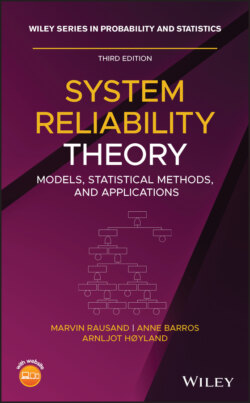Читать книгу System Reliability Theory - Marvin Rausand - Страница 71
Definition 2.1 (System)
ОглавлениеA set of interrelated elements that are organized to achieve one or more stated purposes.
The term “system” is derived from the Greek word systema, which means an organized relationship among functioning items. Aslaksen (2013) considers a system as the combination of three related sets: (i) a set of elements , (ii) a set of internal interactions between elements, and (iii) a set of external interactions between one or more elements and the external world (i.e. interactions that can be observed from outside the system).
For the purpose of a reliability study, the system elements are usually classified as subsystems, subsubsystems, and so on, down to the component level. The system elements may be organized by a system breakdown structure as shown (simplified) in Figure 2.1. The levels of the hierarchy are called indenture levels, where the first level is called indenture level 1, the next indenture level 2, and so on.1 The number of levels required depends on the size of the system and the objectives of the reliability study. The various subsystems may have different numbers of levels.
Figure 2.1 System breakdown structure (simplified).
The lowest level in the system breakdown structure – and in the reliability study – is called component. A component may itself be a system with many parts, but is considered a black box in the study. A black box is an element that is viewed in terms of its inputs and outputs, without concern about its internal structure and functions. When investigating the causes of a component failure, we sometimes need to study the states and conditions of the various parts of the component.
Subsystems are also referred to as modules. In system maintenance, terms such as maintanable item and least replaceable unit (LRU) are often used. A maintainable item is the lowest level in the system hierarchy that is specified for maintenance. A plethora of notions is used in the literature. Among these are the following: apparatus, component, element, equipment, instrument, item, module, part, product, system, and subsystem.
